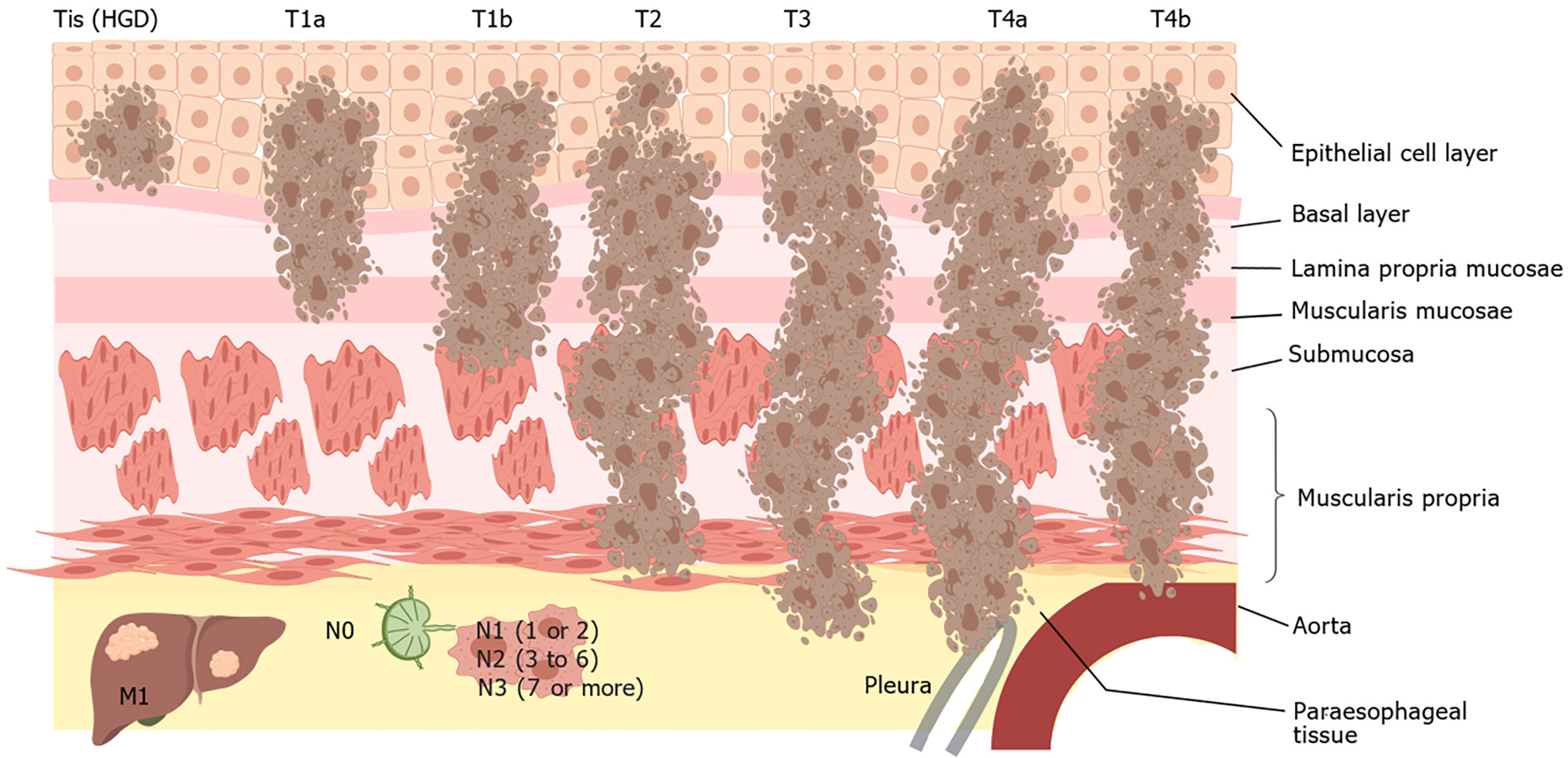Copyright
©The Author(s) 2024.
World J Gastrointest Oncol. Apr 15, 2024; 16(4): 1104-1118
Published online Apr 15, 2024. doi: 10.4251/wjgo.v16.i4.1104
Published online Apr 15, 2024. doi: 10.4251/wjgo.v16.i4.1104
Figure 1 Incidence and progression of esophageal squamous cell carcinoma.
The progression of esophageal squamous cell carcinoma in tissues and the corresponding TNM T stage refer to the condition of the primary tumor lesion, with increasing tumor volume, increasing depth of invasion and extent of involvement of adjacent tissues. TIS: High-grade dysplasia; T1: Cancer invading the lamina propria mucosae, muscularis mucosa, or submucosa and divided into T1a (cancer invading the lamina propria mucosae or muscularis mucosa) and T1b (cancer invading the submucosa); T2: Cancer invading the muscularis propria; T3: Cancer invading the adventitia; T4: Cancer invading local structures and classified as T4a (cancer invading adjacent structures such as the pleura) and T4b (cancer invading major adjacent structures such as the aorta). N stage refers to regional lymph node involvement. N0: No regional lymph node metastases, N1: 1-2 regional lymph node metastases, N2: 3-6 regional lymph node metastases, and N3: 7 or more regional lymph node metastases. M stage refers to distant metastases. M0: No distant metastases, M1: Distant metastasis. Citation: The figure was created by author using MedPeer. The authors have obtained the permission for figure using from the medpeer.cn (Supplementary material).
- Citation: Qi JH, Huang SL, Jin SZ. Novel milestones for early esophageal carcinoma: From bench to bed. World J Gastrointest Oncol 2024; 16(4): 1104-1118
- URL: https://www.wjgnet.com/1948-5204/full/v16/i4/1104.htm
- DOI: https://dx.doi.org/10.4251/wjgo.v16.i4.1104









